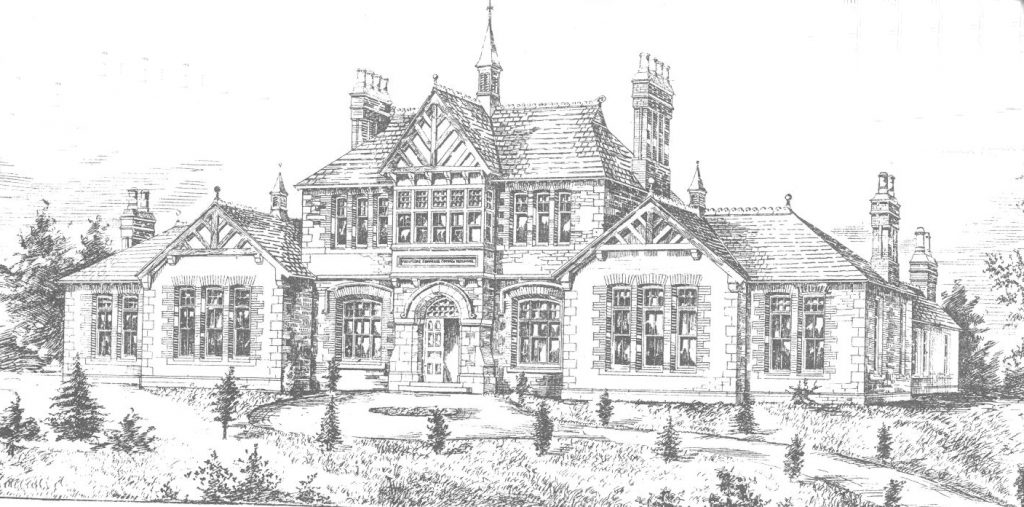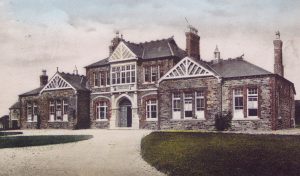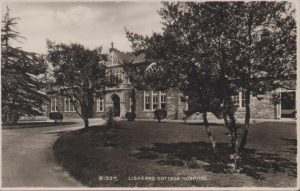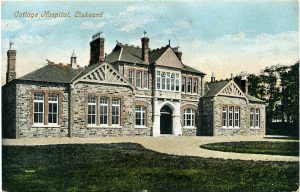After more than 100 years as a hospital the building was restored and became central to a new community housing development.

History
Constructed on land given by Mr L Carrington Marshall, the hospital was adopted by the Borough Council from the start and strict codes of conduct were applied.
Medical staff consisted of members of all medical firms resident in the Borough and at least one of these, the “Surgeon of the Day”,was on duty at the hospital at anyone time to attend to all accidents and urgent cases brought to the hospital where these were not accompanied by a doctor.
The medical staff where responsible for the medical management of the hospital but reported to the Committee and were expected to abide by the general code of conduct. Honorary Medical staff consisted of W Nettle, W Hammond, R Hingston and W H St Ledger Carter. W H Lyne was the Honorary Dental Surgeon.
Matron was required to reside at the hospital and to seek the permission of te Committee to take laeve. She was responsible for attending to all patients and for the good conduct of nurses, servants and the patients.
Whilst the poor were treated without charge, other patients were expected to contribute from 1s to 2 guineas “as determined by the Committee”.Family of the patient were reuired to sign an agreement to pay the charges, presumably in case the patients treatment was not successful. Patients were expected to have “decent clothing and proper change of linen.
Those suffering from contagious diseases. epilepsy, TB,or “of unsound mind” were not admitted. Anyone removed from the hospital due to poor behaviour was not readmitted without the consent of the Committee.
The annual report for 1899 showed an income of £195 19s 3d from subscriptions, £9 14s 10d from donations and only £26 10s from inpatients. Out goings amounted to £275 2s 11d, of which £25 15s 9d was for Surgery and dispensary and £90 19s 5d for salaries and wages. A total of 66 patients were admitted of which 45 were cured, 6 “very much improved”, 3 “relieved” and 6 died. Another 12 died “shortly after”.
Patient numbers increased and in early 1914 improvements and alterations to the hospital were carried out to meet the needs. Matron, Miss Gillespie, was called up in 1915, not returning until 1919. Nurse Parker took over whilst she was away on war service. A number of wounded Belgiums were treated free of charge in 1918 and the hospital became a local centre for the treatment of discharged soldiers and sailors at the end of WW1 with a convalescent ward made available to the Red Cross at no charge.
Both Matron and Nurse Parker left the hospital in 1920 and Mrs M E Sanders Sister F Burch took there places.
Electricity was not installed at the hospital until 1925 and with it came X Ray equipment. Extensions to the hospital were carried out in 1927.
Architect
Current Use
In 2002 the hospital closed and services transferred to a new hospital building. Plans by the Primary Care Trust to demolish the hospital, known locally as ‘Passmores’, and redevelop the site for housing were met with protests from townsfolk concerned about the loss of the town’s historic buildings and that this would be the first Passmore Edwards building in Cornwall to be demolished. The Town Council voted to refuse permission for the demolition, but agreed that the building could only be saved if a new use could be found for it; being called Passmore Edwards was not sufficient. A suitable use was found, as part of a sheltered housing complex, and this was opened by the Duchess of Cornwall in 2011, during the centenary year of Edwards death.


